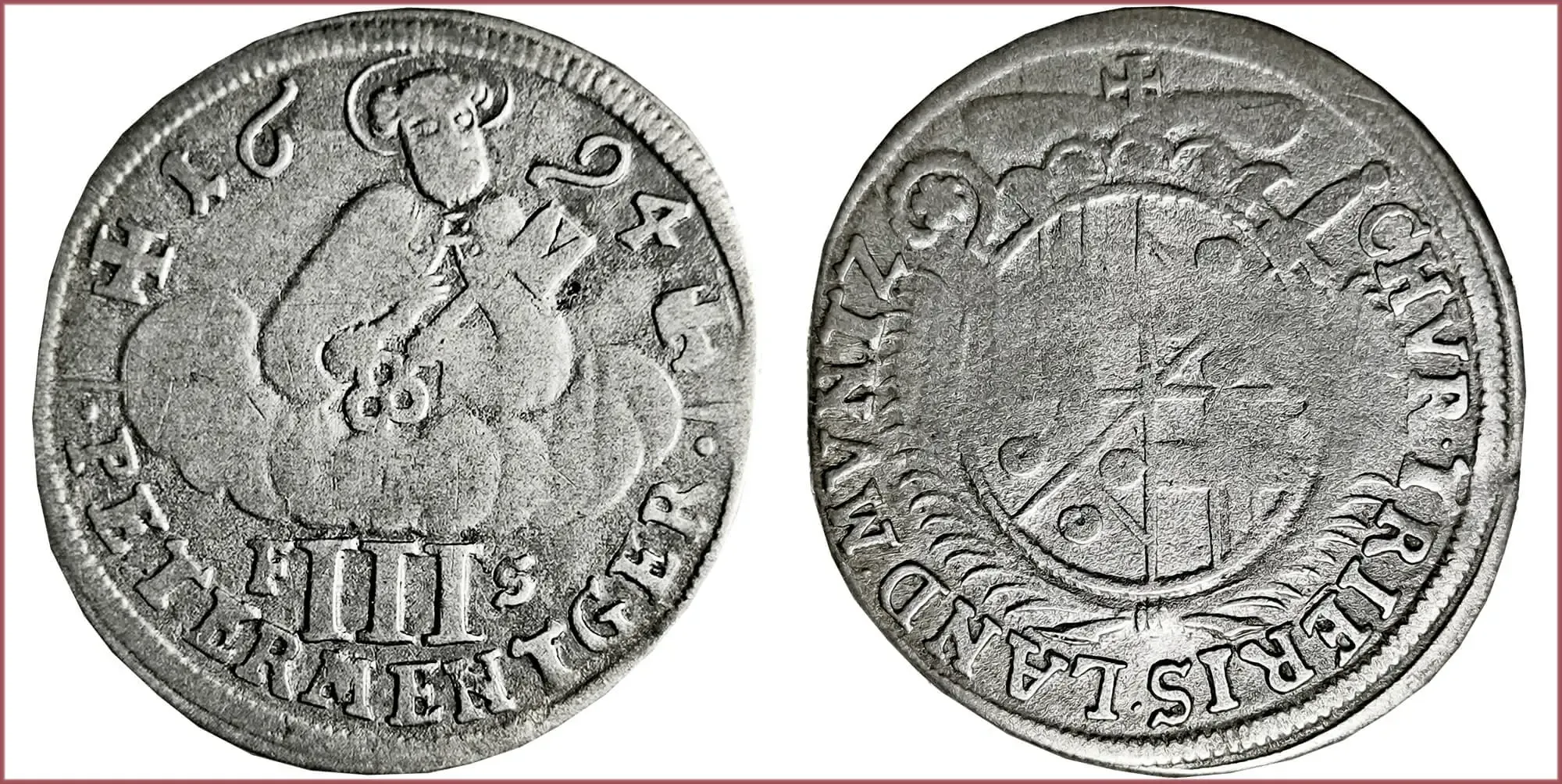PETERMENTGER: COIN OF TRIER
3 petermentger, 1694: Electorate of Trier (Germany)
Electorate of Trier (German "Kurfürstentum Trier") — ecclesiastical principality of the Holy Roman Empire that existed from the end of the 9th to the early 19th century (nowadays Trier is a city on the banks of the Moselle river in Germany).
Ruler: Johann Hugo von Orsbeck — the Archbishop-Elector of Trier during 1675-1711.
III PETERMENTGER: 3 petermentger (some numismatic sources indicate the denomination of this coin as 3 albus, because petermentger was equated to albus).
F and S: Mint Master's initials (probably).
St. Peter with the key of the city gate in the clouds as a typical graphic subject, the basis of the design of petermentger coins and etymologically similar denominations.
Crowned coat of arms of the bishop and elector of Trier.
CHVR. TRIERIS LAND MVNTZ: coin of the Elector of Trier (CHVR. — Churfürsten or Kurfürsten...).
- Silver: 24 mm - 2.31 g
- Reference price: 22.5$
COIN PETERMENTGER — WHERE & WHEN (coins catalog: by names & emitents)
- ELECTORATE OF TRIER (Germany States, 17th-18th centuries): petermentger = 8 pfennig = 1/2 groschen
PETERMENTGER as coin name.
Petermentger (alongside with varieties: Petermenger and Petermengen) — German old silver coin; a variety (and essentially a successor) of albus coin.
It was produced during the 17th and 18th centuries on the territory of the Electorate of Trier (Trier is the oldest city in Germany).
Due to the high quality and significant scale of the emission, it spread to the surrounding German states: Westphalia, Thuringia, Brandenburg...
The name of the coin indicates its main plot — the image of Saint Peter.
The early types (middle of the 17th century) had the name German "Petermännchen". However, already at the end of the 17th century on the extremely common Trier coin (plot: Saint Peter with a key and a book among the clouds) the denomination was indicated as "petermentger" (...mentger).
At the beginning of the 18th century a coin with a very similar design already contained the wording of the denomination in the format "petermenger" (...menger ). Small denominations, for example 1/2, carried an indication of the coin name in the form of "petermengen" (...mengen).











